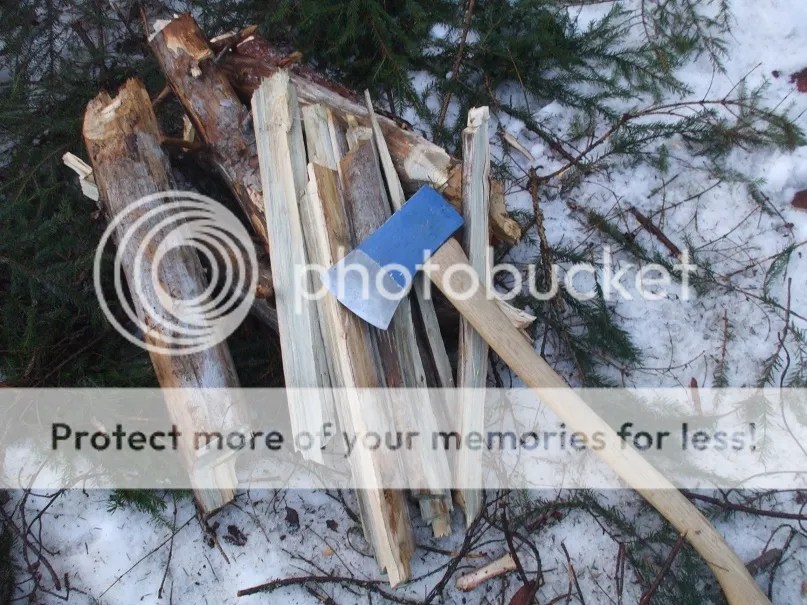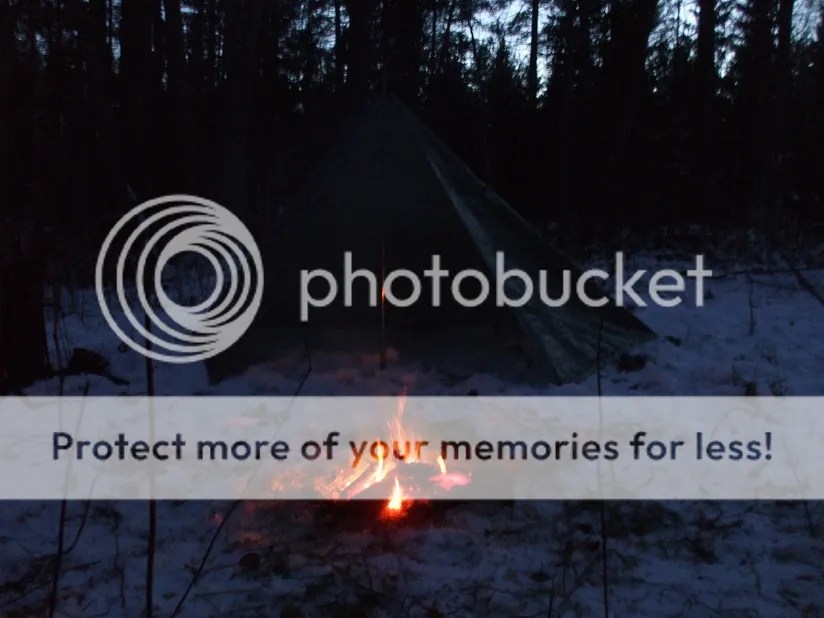In case you missed it, Part 1 can be found here.
Pasi and I had spent Monday night at the Vaskojoki hut, which is open to wilderness travelers on a first-come, first-served basis and provides bunks with mattresses, a wood-burning stove, a table and benches and even a gas cooking stove.


The scenery around the hut wasn’t too shabby.


Following breakfast, we packed up our gear and said adieu to the Vaskojoki hut, traveling roughly along the Vasko River looking for a suitable place to cross it. The wetter land between the river and drier pine forest was often covered with scrubby birch trees.


Here’s Pasi testing a route across the river.


Our prospects didn’t look good at that location, so we headed to a higher elevation and traveled through the pine forest again. A sight often encountered throughout these forests was reindeer droppings, aka “nature’s licorice jellybeans”. They are much smaller and darker than moose droppings.

Speaking of moose, while Pasi and I stopped to take a short break, I spotted a cow moose plodding through the forest not too far away. She obviously didn’t smell or hear us, for she carried on with her business for quite a while. Unfortunately, the best picture I could get of her was this (she’s the brown blob in the center):

As we continued hiking parallel to the river, we came across this kota/lavvu frame. For those of you not familiar with this type of shelter, it is similar to the tipi used by Native American Indians. In Lapland, they are primarily used by the indigenous Saami people/Laplanders.

Our route toward a narrower and rockier section of the river where we might cross more easily took us over some very marshy ground. Good thing I was wearing rubber boots! A few scenes from along the way:


An old bird’s nest:

Parts of the forest were littered with scraggly dead pines like these.

Some of the marshy areas were full of dwarf birch, the leaves of which had either turned brown or fallen off by that point.

When we cut over and approached the river again, we looked for a suitable place to stop for a meal and thought this area would do.

While Pasi got a fire going in a fire pit used by previous hikers, I collected firewood from a dead pine nearby with my Fiskars large sliding saw.

It was a fine spot for a meal indeed. 🙂

From time to time, the clouds broke, giving us a glimpse of beautiful blue sky.

Following our meal break, we threw on our packs and headed southward away from the river and through the pine forest to a lake where we’d make camp. We saw these moose rubbings along the way. When a bull moose is regrowing antlers in the spring and summer, they’re covered in a fuzzy layer of skin called velvet which the moose rubs off once the antlers stop growing. They often use saplings like this for the purpose.

We reached the small lake, which was linked to the river by a stream, and set up camp before it got dark. We followed the usual drill of setting up our shelters and a stone fire ring and then collecting firewood. Pasi’s shelter on the right is a “pena-laavu” from the Savotta company, and my shelter on the left is two German army surplus ponchos snapped together in a brew shelter configuration. I wasn’t able to set up my shelter perfectly because of the trees nearby, but it worked well enough.

The water we got from the lake was crystal clear and delicious. Just dip your cup in and drink. 🙂


In all, we had hiked about 9 km/5.5 miles on Tuesday, and I was eager to hit the sack as soon as night came. Pasi arose earlier than I for some morning capercaillie hunting with his laika Pyry. I awoke to Pasi shouting at Pyry some distance away in an effort to stop him from chasing a moose, which can lead to a long sit-and-wait or retrieve-your-dog-from-deep-in-the-wilderness scenario. Pyry complied and I fell back to sleep. A bit later I woke up again and started up the fire after collecting more wood. While fiddling around, I heard a nearby shotgun blast from the otherwise silent forest, and Pasi returned with the second capercaillie of the trip, another male, which was older and more substantial. He related his brief encounter with a bear that morning as well as his intention to return to the area for a bear hunt in the future.

After Pasi had finished unburdening the fowl of its internals, we sat down to cook a meal over the fire. He had remarked that the temperature dropped below freezing overnight, at which time I remembered noticing this at some point during the night. Not long after, we got a little confirmation from mother nature in the form of a 5- to 10-minute period of wet snowfall…quickly followed by sunshine.


Out of curiosity, I took out my thermometer to take a reading. Just as the weather report had forecast, it was 4°C/40°F. As a side note, I used the Swiss sleeping bag and sleeping bag liner on this trip and never felt cold.

We then packed up and headed down to the river again to search for a good spot to cross. We cut ourselves some poles from the nearby woods, and Pasi skillfully led the way across.








With my luck being what it is, I’m sure you can guess what happened when I traversed the cold river, stepping from one slick rock to another. 🙂 Yes, yours truly fell in, filling my boots with water and getting wet almost up to my waist and wetting the front of my jacket and my gloves as well. Fortunately, the water wasn’t deep there. I picked myself up, wrought myself out and continued across the river. After quickly changing socks (my pants dried surprisingly quickly, so I left them on) and dumping the water out of my knife sheath, we continued hiking on the other side of the river toward our pick-up point, but not before I slipped on a boulder at the edge of the river, landing on my kuksa (the one I got from the Woodsbabe’s grandparents last Christmas). I had attached it to the shoulder strap of my pack with a carabiner for easy access, but never expected it to serve as an emergency cushioning device. Let’s just say I’m happy I landed on this cup with one of my cheeks and not straight onto the boulder with my tailbone… While it was unfortunate that this gift was rendered unusable, I’m sure the Woodsbabe’s grandparents would be happier knowing it broke while on a wilderness trip in Lapland as opposed to sitting on a shelf collecting dust!

The rest of our time in the forest was uneventful. We traversed some more marshy land near the river and eventually reached the pick-up point, where Pasi’s girlfriend was waiting for us. That evening, the three of us drove out to their cabin further to the north. Pasi intended to paint the new shed he put up there, and I offered to help. It ended up raining all Wednesday night and Thursday morning, so we scrapped the idea, instead returning to their home. That afternoon, they cooked my favorite Finnish dish, “käristys”, with moose meat (reindeer is often used as well). To make käristys, partially frozen meat is cut into thin slices and then slow-cooked with onions in butter over low heat. It’s then usually served with mashed potatoes and cowberries/lingonberries. Pasi used a leuku he made to slice the moose meat. The meal was delicious.

A while after eating, we three drove to the Siida Saami Museum in the village of Inari, which had very interesting exhibits covering Saami history, culture, handicrafts and technology, including an open-air section which I’ll cover next time. The museum also had plenty to show and tell about the geology, fauna and flora of the region.
Bidding my gracious hosts farewell on Friday morning, I retraced my 12-hour train and bus route of almost a week earlier and returned safe and sound (and a little sore) at home. Despite the issues of this year’s trip, I’m already looking forward to my next trip to the north (for which I will definitely be better prepared). As per usual, I’ll use this experience to make future trips more successful and enjoyable!
I want to say thanks to Pasi for being a great wilderness companion, showing me around “his neck of the woods” and for being patient and flexible. He really added a great dimension to the trip. I’d be happy to join him for another in the future (in better condition, of course ;))!




























































































































































































